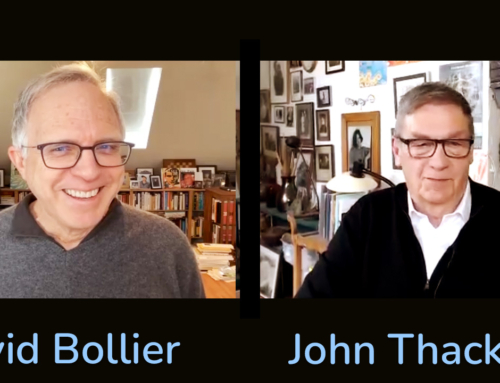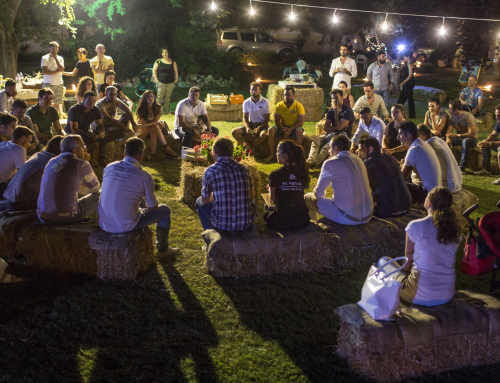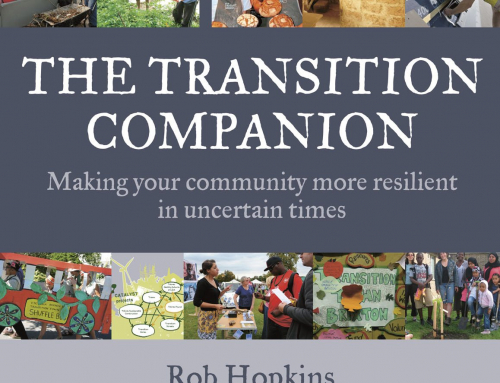Infodrome, a one-day conference for the top civil servants of The Netherlands held in The Hague this month (April 2001).
Infodrome is a think-tank set up by the Dutch cabinet to analyse the consequences of information and communications technologies (ICTs) for government and its agencies. Its task is to expose policy makers to possible future scenarios, and thereby to enrich the policy-making – and public money-spending – process.
Charles Leadbeater, an advisor to Tony Blair and a keynote speaker at the Infodrome conference – pronounced it an ‘incredibly grown-up process’. For his part, Leadbeater made an incisive case for the need to focus on institutional innovation – and not just on technology – if governments are to succeed in their role as joint stewards (with citizens) of the public domain, physical and informational infrastructure, learning, health care and so on. The consensus at Infodrome seemed to be that, although governments have to re-think what they do, and how, they are needed more than ever in a world changing profoundly and at increasing speed. Yes, we could listen to the propagandists of the new economy, and leave it all to the market and to corporations – but that would be the gloomier of the futures among the utopian and distopian visions discussed at Infodrome.
The story below is the text of John Thackara’s presentation at Infodrome, on 11 April 2001.
You often hear talk, at this kind of meeting, about ‘cultural barriers to innovation’. Innovation is not just about technology, experts like to say: innovation also means changing the way people think, and behave.
This argument is used frequently about learning. We know that everyone has to become a lifelong learner. The way to achieve this, it is said, is by making the Internet a gigantic distribution system for knowledge. Knowledge for all – a bit like water. The only obstacle to this rosy scenario, goes the argument, is that people are not ready, or able, to be filled up with knowledge in this way, like a bucket under a tap. Therefore, people have got to change.
This is the wrong way to think about learning and the Internet. People are not a ‘problem’ to be solved. The real barriers to innovation are institutional: our teaching concepts, our professional associations, the business models of publishers and media companies, and countless incompatible technical standards.
My talk this morning is about a key aspect of this picture: file-sharing, and peer-to-peer knowledge exchange over the net. File-sharing is a good example of the people being ready, and the technology being available and working well – but where institutional barriers are holding us back.
Now, file-sharing is one of those subjects that far more people talk about, than actually do. So first, a quick check: hands up who has heard of Napster? Now, who actually uses Napster – or Freenet, or Gnutella – on a regular basis?
As I would have expected: for every 100 people who have heard about the subject, five per cent, at most, have had direct experience! I include myself as a non-user, by the way – but I have friends who show me around!
(The following section accompanies a demo of Napster). So let’s look at what this file sharing story is about. Once you start the programme, it connects automatically to the Napster server, which maintains an index of everybody’s collection – or at least, everybody who is connected at that moment.
You type in your search keyword. You can limit your search by choosing line speed, in this case a minimum of ‘T1’: this means you are looking for this music only on computers that have a fast connection, so that your download time will be shorter. You hit the search key, and out pops the window with the results. You can sort this list in various ways, as with response time.
Then you pick your song. You double click it – and up pops a box called transfer manager. At this moment, a song on somebody else’s computer is being copied onto the hard disk of your own computer. Whilst the transfer is under way, you can already go to your download folder and listen to the file, even before it has fully arrived. By the time this song is safely parked on your hard disk, it is automatically made available for other people to copy from you.
But the exchange of music files is just one aspect of the file-sharing phenomenon. Just as important: the system connects you with other people out there – not just with a catalogue of songs of the kind you might find on a publisher’s website.
If you search among the so-called ‘channels’, the window lists different genres: pop, oldies, rap, jazz, techno, rave, hiphop. You name it – there can be a hundred or more on a busy day when a lot of people are connected (to Napster). Each channel – or folder – is inhabited by a particular interest group. When you open one of these folders, you find a list of nicknames representing real people who have put their own music collections online, ready for you to copy.
You can check their line speed, which is important if you care about the speed of downloading. I usually go straight for the T3 group. Today, I’m lucky because “Mr Guggenheimer” is here, whose collection intrigues me; it happens to be on a speedy T3 line. I am interested in what he has to offer, so I peek into his library, his personal collection of songs and . . . oh wow . . . great stuff! Now I decide to bookmark him into my hotlist so I can find him again, so I hit the ‘add to hotlist’ button. My hotlist is the list of people that have interesting songs and that I might want to look up again. I check if he indeed has ended up in my hotlist, and there he is. I can check his speed again, in case I forgot.
Now I decide to send him a message. At his end, my message to him will pop up in a little window. And he might decide to reply. I should warn you that, content-wise, it can be a bit adolescent out there. File-sharing is a marvel of communication – but the contents can be less than marvellous!
I decide to download one of his songs now, and will proceed as with a normal download, like I showed you before. The transfer manager will pop up and you can listen to the song while you download.
Systems such as Napster enable you to communicate not only with a machine but, if you so wish, with another human being who seems interesting because their tastes overlap with yours.
This is where the cultural energy of file-sharing comes from. It’s the essence of peer-to-peer – or “P2P”. You search indirectly, by comparing tastes – but then you connect with that person directly. You learn from and with each other.
There are various kinds of P2P systems. Napster is just one. But in its very short life – less than two years of existence – Napster alone has attracted nearly 40 million committed and enthusiastic users. That’s far more people than watch most so-called ‘mass’ media.
Just like email, and just like the mobile phone, the ‘killer application’ here is connectivity and sharing among people. That is the cultural driver ofP2P.
Most recent attention has focused on the implications of file-sharing for music. And music is a 40 billion dollar business. But recorded music is only one kind of intellectual property. Words are another – there’s an ‘open content’ movement on the Internet.
Images are IP, too. I met some artists in Montpellier two days ago, who are building an open artwork network (Domaine Public, an idea of Eric Watier, info: cebra@club-internet.fr).
And you may well have heard about the Free Software movement and the concept of ‘Open Source’ and open standards. With Linux, thousands of people work on each others’ code, continuously – massive testing and peer review that private companies, however huge, cannot afford. Linux is never finished. Its response time to change is incredibly short, thanks to countless people working on it on a daily basis.
Open Source is not just a regulatory issue: it lies at the the heart of the relationship between ICT and organisational structure.
Let me remind you how we shared intellectual property up until now. In the beginning was the Word – and it was free. Language enabled us to tell each other stories, an effective way to share knowledge and experience that has worked well for 20,000 years – and still does. Then came writing and, with it, the possibility to transfer knowledge from one person to another indirectly. Four hundred years ago, with printing, we industrialized writing, learned out how to embody knowledge in an object, and, with the invention of copyright, created the publishing industry. First came books; a bit later, with sound and image recording, we added records and CDs; more recently still, we added software to the list.
So file sharing raises fundamental questions about the distribution methods – and the business models that underpin them – for all kinds of intellectual property. The old model was simple: the publisher packages knowledge, and we buy the packages – books, CDs, whatever. This model worked perfectly for 400 years or so. It was only with the rise of file sharing that this cosy system came into question. File sharing disrupts this simple and deeply rooted model of publishing. This is why we have the law suits and rhetoric surrounding Napster.
It’s terribly important to filter out the screams of anguish from vested interests, as they contemplate extinction, from the potential of file sharing in a learning-based society. We confront a world whose complexity is growing at an exponential rate. As you will hear repeatedly today, computing and connectivity are pervading products, buildings, our bodies, nature.
You’re probably sick of hearing all those e-words: e-learning, e-health, e-governance. But if you thought nothing was changing, thenyou would not be here today. We are in the middle of a profound transformation in which everything around us, and in us, is being networked. The way we will cope is by learning from each other – continuously, collaboratively, and without friction.
During the Iron Age, it took one hundred years for knowledge about smelting to cross the world. But we simply don’t have 100 years to learn how to live in a world of infinite connectivity. We have to learn in ways that are direct, collaborative, continuous. The good news is that two of three necessary conditions for this kind of learning have been met.
Condition one is cultural. We have the will. Human beings have an innate desire to learn, to connect with others, and to share. I already told you about the 38 million Napster users. Did you know, too, that more people take part in voluntary continuing education each year than the combined number of people who go to sports events, and take air flights? ‘Peer-to-peer’ file sharing is not an algorithm, it’s human nature.
Condition two is technological: We have the technological means to support radical, ubiquitous file sharing in the form of the Internet, peer-to-peer networking, and the file-sharing techniques of the kind I just showed you. Ian Clark, the 25-year-old Irishman who designed Freenet, said: “It’s a way to de-commercialise information, period”. File sharing, which fosters continuity and collaboration in learning, combines technical and cultural forces.
Condition three is institutional – and that’s where we do face obstacles. This is also where you, as policymakers come in: there’s plenty of work for you to do!
The first institutional barrier is the variety of attempts to privatise information – people who try to privatise algorithms, genetic data, or natural organisms. This one is a real snake: we have to kill it.
A related obstacle is the commodity model of publishing I mentioned just now. We need to be firm, but perhaps more humane than with the privatisers of discoveries, in helping publishing change its business model from the commodification, to the facilitation, of learning.
A third institutional barrier: technical standards that make it harder for systems to operate together – rather than easier, as we need.
These are the ‘cultural barriers’ to a learning society that need to be removed. I do not know how to get rid of them. I have no blueprint for a transition from a culture of learning that is corporate, to one that is collaborative. I do not know how to foster a culture of learning based on free exchange of knowledge, Open Source software, and its learning equivalents.
What I do know – and here I will conclude – is two things. First, learning is not a ‘problem’ that will be solved by technology. Neither is learning a problem of human nature, which we somehow have to change. On the contrary, we want to learn, and we have the technical means to do so in new ways. The only obstacles are institutional.
And that brings me to the second thing I know: “Where there’s a will, there’s a way”.



